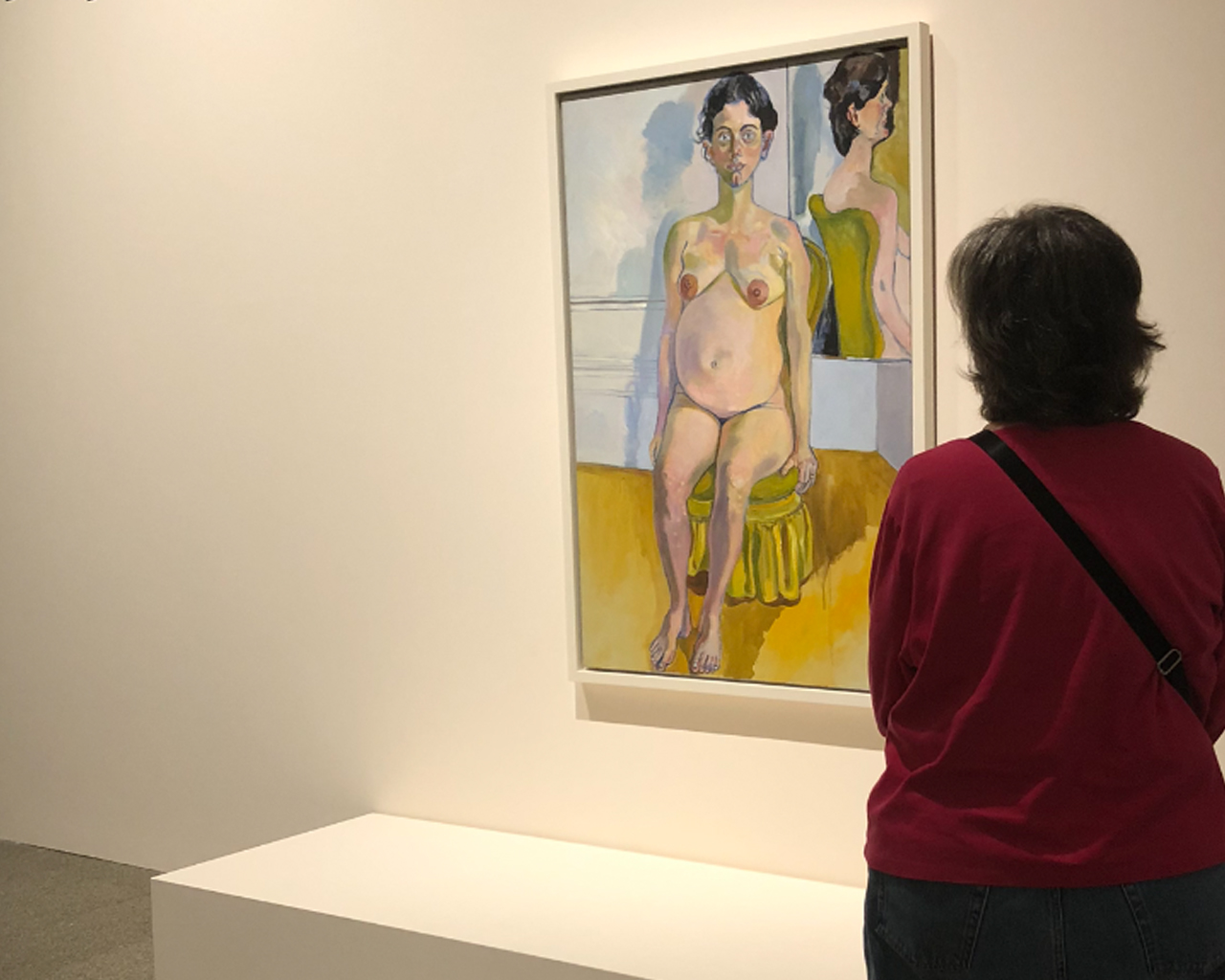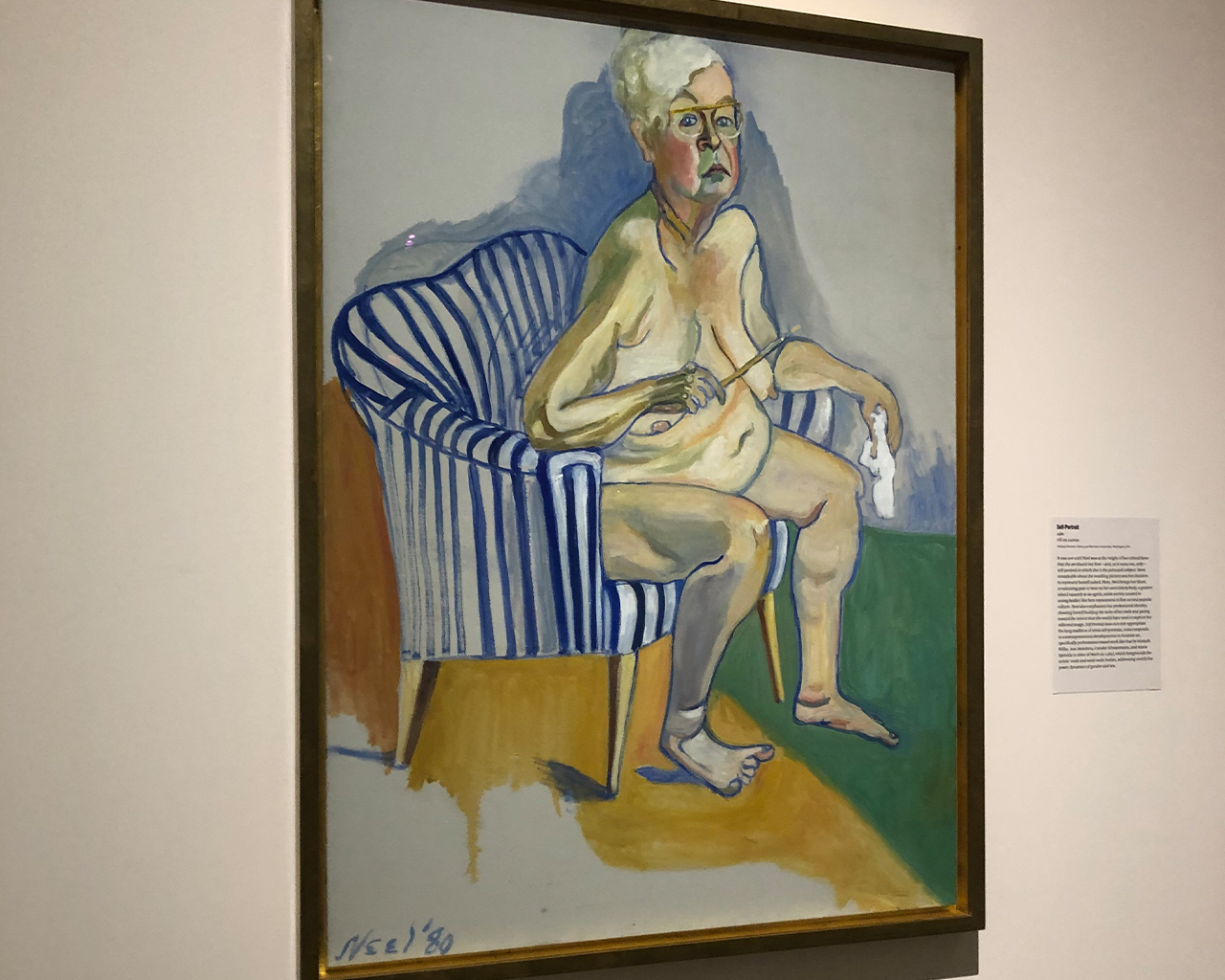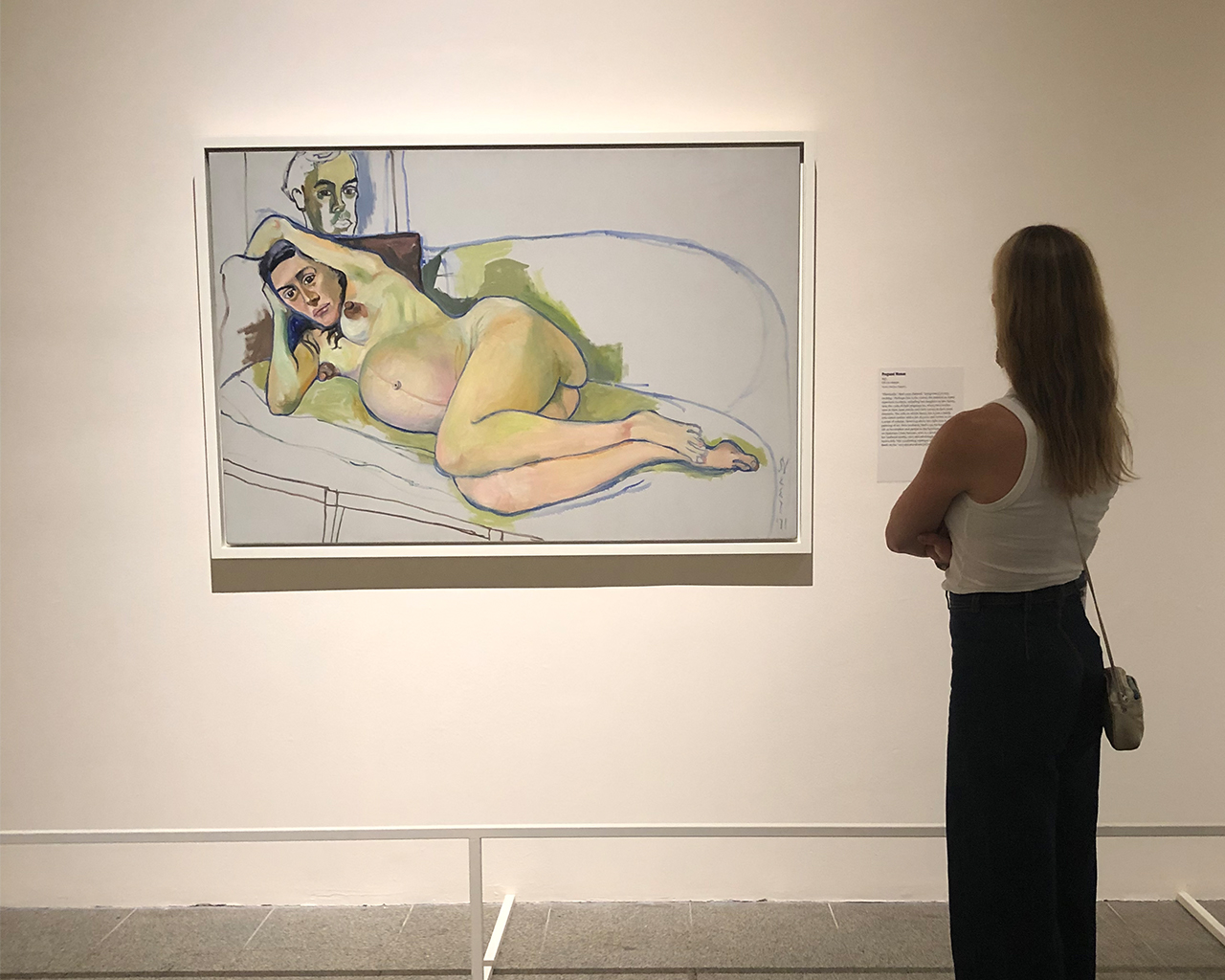

“People Come First,” the Alice Neel show being mounted in the Tisch Galleries at The Metropolitan Museum of Art, closes on August 1. It is her first retrospective in 20 years. She is the only female artist to have had an exhibition in the Tisch Galleries, a place of prominence at the Met that has until now been reserved for such historical figures as Michelangelo and Delacroix so, in that, Neel, a determined feminist who disguised it when needed with her chatty charm, has become historically significant herself. I was about to write that she is the female Lucian Freud – a feminist faux pas and one she would have chattily yet churlishly spurned in her Auntie Anti-Abstract Expressionism way, a moniker that I think she might have laughed at because for all her seriousness as a political being she also loved a good giggle at her own expense. Watch this clip of her on The Tonight Show to understand how disarming she could be as she delights Johnny Carson.
After seeing this show at the Met, I have, in fact, come to believe that Lucian Freud is the male Alice Neel. Her radical humanity as an artist was a forerunner to his. Neel is Freud’s artistic id – to borrow a term from his grandfather Sigmund – each, Alice and Lucian, fraught with the need to acknowledge the stark reality of flesh as they complemented it with feints toward early forays into surrealism in Freud’s case and threads of abstraction in Neel’s as she needled her canvases with it, canvasses filled with the brilliance of her figurative art, just as the male-dominated Abstract Expressionist movement needled her about her gender and her demands to be taken seriously. The influence of Neel lies pentimento there beneath the layer upon layer of paint in Freud’s impasto technique. Indeed, I haven’t been as moved and even thrillingly troubled by an exhibition since November of 2019, when I strolled through “Lucian Freud: The Self-Portraits” at the Royal Academy of Art in London then strolled through it again. And again. I did the same thing at the Met in June, when I repeatedly walked through the Neel show trying to process her alchemic genius of capturing – even cauterizing – the damned human condition with only the strokes that were deemed needed and sometimes even leaving a canvas “unfinished,” as so many of us forsakenly are. This was the opposite of Freud’s technique and yet the alarming, alluring results are so alike. Why were they, this American woman who struggled in so many ways during her lifetime and this privileged British man who was born in Berlin, aligning in my thoughts -, especially since Neel, even though she focused famously on her nude self when she was 80, was politically ecumenical in her choice of portraits, while the Freud show that had equally moved me was centered solely on himself?

In this Neel retrospective, the curators, Kelly Baum and Randall Griffey, have on some walls paired her work with Cassatt, Van Gogh, and Soutine, among others. But it made me long for a show that would pair instead Neel with Freud and the “conversation” that would ensue between them. Her canvasses are canny in their incongruous immediacy and mindfulness; they, imbued in some way with her characteristic to be chatty to cover up a rightful churlishness, won’t shut up as we engage with them. They are, yes, conversational in tone, but the conversation can become a bit cacophonous as they bear down on us with the overly constructed bohemian bonhomie of, oh, say that which was once found at the Cedar Tavern expressively filled with abstract testosterone in need of the reality of some female testiness. The short first paragraph of Neel’s New York Times obituary, in 1984, referred to her, in fact, as “the quintessential Bohemian.” She surrendered to accepting her truest self over and over, at times to her own disadvantage and detriment. Freud, too, was a Bohemian but was more willful about it since it was a rejection of all the advantages that befell him. His canvasses engage us with that same kind of willfulness in their having survived being painted by him and the long visual interrogation it took for them to arrive before our own eyes. His canvasses seem too exhausted to talk back to us – a kind of taciturnity overtakes them – and are just loquacious enough to beg us to share in the silence that, like a Freudian advantage, then befalls them. Neither Neel nor Freud had much use for smiles on the faces they chose to capture as they reconfigured figurative painting to combine a photographer’s keenness for likeness with an empath’s deeper delineation of depiction. The New York Times art critic Roberta Smith in her own keenly observed paean to Neel and the Met’s retrospective of her work, which was titled “It’s Time to Put Alice Neel in Her Rightful Place in the Pantheon,” referenced an “overkill of likeness” and sometimes when looking at a Neel or a Freud canvas, I do think of Arbus being let loose in Avedon’s studio.

Alice Neel called her work “pictures of people.” She didn’t like the term ‘portrait’ and, when using it, her voice seemed to furnish it with its own frame in the form of quotation marks. “One of the reasons I did paint people was that I thought ‘the portrait’ had fallen into a bad spot,” she once told interviewer Susan Stamberg on NPR after remarking on Stamberg’s dress and the pleasing imperfection of her “squashy” nose. “Yes, I’m visual,” Neel continued after Stamberg mentioned the “squashy” comment. “The eyes are a ganglion of the brain. None of the other senses are. We are first of all-seeing animals. As for your nose, Whistler said that ‘the portrait’ is always something where something is wrong with the nose. I thought that was very cute. A nose is just something that is part of the face. Like I painted male nudes but everybody – all they think about – is the penis. But really to me the penis is just part of the whole. I never think of it separately.” Stamberg then began to remark that the eyes are the mirror to the soul. “Well, that’s old-fashioned,” Neel said, cutting her off.
In his rave of the Neel show at the Met, the Washington Post’s Pulitzer Prize-winning art critic Sebastian Smee pointedly quoted Freud: “‘In a culture of photography,’” the painter Lucian Freud once said, “ ‘we have lost the tension that the sitter’s power of censorship sets up in the painted portrait.’ A crucial difference between portrait photography and painting, Freud added, is ‘the degree to which feelings can enter the transaction from both sides. Photography can do this to a tiny extent, painting to an unlimited degree.’”
Neel: “Like Chekhov, I am a collector of souls …. If I hadn’t been an artist, I could have been a psychiatrist.”







